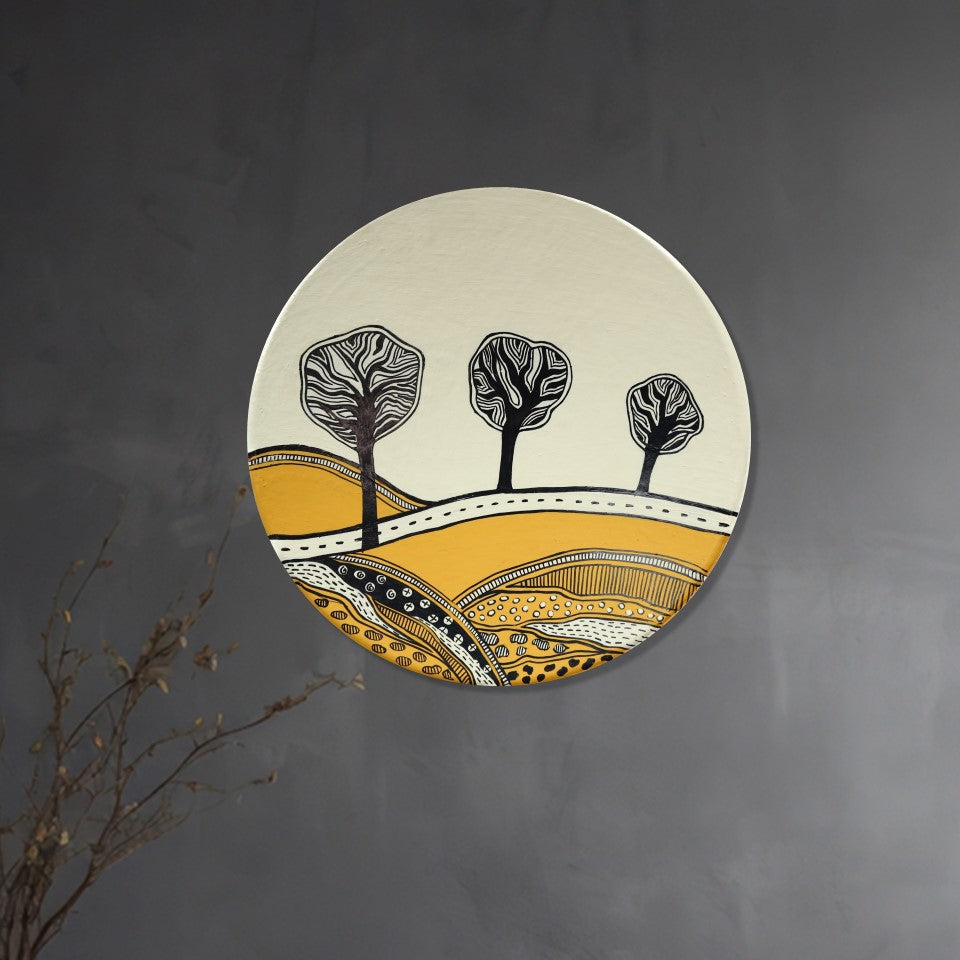Warli Art - The Life of Tribe
Share
India is renowned for her rich diversity, be it color, caste, creed, costume, cuisine, culture or craft. Most people in India, especially in rural areas, make their livelihood by practicing various forms of craft and art. Warli Art is one of them.
History & Evolution of Warli Art:-
Warli Art, one of the oldest folk art, depicts the way of life. This form of art was not recognized until the 1970s, while its roots may be traced to as early as 10th century A.D. Warli is the name of the largest tribe found in the state of Maharashtra. Warli tribe is spread across the North Sahyadri range in India. Cities like Talasari, Jawhar, Mokhada, Dahanu are encompassed in this range. Despite its close vicinity to the metropolitan city, i.e., Mumbai, the tribesmen shun all influences of modern urbanization, keeping their tradition and customs alive.

Farming is the main economic activity of the Warli tribe so its sway can be traced in this art form. Warli has a lively expression of daily and social tribal activities including marriage rituals, hunting activities and religious symbols. Its closeness with nature can be seen in animal and flower motifs used in the art. In villages, walls are made up of basic materials like branches, mud, cow dung and earthen bricks which give them a red ochre color. These red-colored walls serve as a background for ritualistic paintings. Warli is a monochromatic art, unlike Madhubani which has several vibrant colors, painted mainly in white color with occasional dots in yellow and red. A paste of rice and water with gum as a binder is used in making this white pigment. The bamboo stick is chewed on one end to use it as a brush to paint the mud walls.
It is hard to find a continuous line but a series of dashes and dots is used in the art traditionally. Geometric shapes have mythological importance. For instance, circles symbolize The Sun and the Moon and triangles represent mountains. The scenes of farming, fishing, hunting, and sacred tribal rituals embellished beautifully to bring out the magical world of tribal people.
Warli Painting in modern times:-
Warli Art doesn’t limit itself to mere art but it expands to the regular events of life. In recent times, various lifestyle companies, artists, and craftsmen have encompassed this traditional art form with some elements of their own. New techniques enable artisans to make Warli Art competent with other contemporary art forms. Modern Warli Art has replaced dashes and dots with a continuous line. In several spheres, Warli art has also introduced with various color palettes apart from white. Nowadays, Warli Art is not restricted to mud walls only. One can see markets flooded with products painted with this art form - sarees, terracotta pots, jewelry, and scarves, to name a few.
Future of Warli Paiting:-
A group of artists from Japan have adopted the Ganjad village of Palghar district to revive this old-age art and to provide the required boost. Dahanu is yet another village deploying the artists to keep the art alive. The Indian government is also hitting the nail on the head. Walls of railway stations like Anand Vihar in Delhi are furbished with Warli Art wallpapers. These steps by different communities show how important is it to preserve our tradition.
You can also pay your bit by promoting this tribal art. Purchasing hand-painted products in this art encourage several artists. Add this piece of great panache in your cart today to help the Indian-ness alive.


